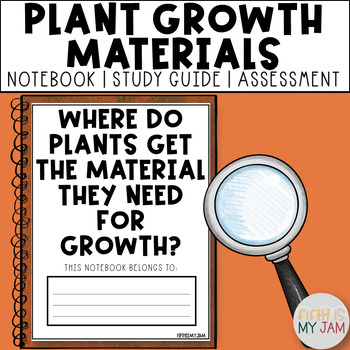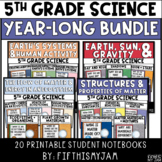What Do Plants Need For Growth | Printable Notebook ONLY Science Lesson
- Zip
Also included in
- What does an ecosystem include, what is an aquatic biome and a terrestrial biome, and how do human activities affect ecosystems? While the standards closely align with 5th Grade NGSS standards, if you are teaching about ecosystems and organisms in general, this may be perfect for you! Here your studPrice $24.78Original Price $35.40Save $10.62
- ➡ PLEASE READ BEFORE PURCHASING ⬅By purchasing the bundle, you receive all units/notebook sets within this bundle at a 30% discount. As additional resources are added, the bundle's price will increase accordingly. By purchasing the bundle at the current price, you will receive future resources addedPrice $89.99Original Price $170.95Save $80.96
Description
What are producers, and what is plant survival? Here, you will learn what plants need to survive, the different parts of a plant, and more by answering this Big Question: Where Do Plants Get the Material They Need for Growth? While the standards closely align with 5th-grade NGSS standards, this may be perfect for you if you are teaching about plants in general!
➡ NEED MORE THAN JUST A PRINTABLE NOTEBOOK?
➡ NEED A DIGITAL SET ONLY (no printable included)?
Click here to get this product and four other lessons completely digital.
❤ This product is included in a UNIT BUNDLE marked down 30% off with digital components included.
❤ This product is included in a YEAR LONG BUNDLE marked down 30% off with digital components included.
Included in this packet and set:
- Full guided student notes with reading passages included for teaching about the role plants play in an ecosystem, the five essential materials a plant needs for growth, and a closer look within those essential parts(roots/stems/leaves and nutrients and minerals). (Only one version of notes (page number + lesson number) included)
- Two investigations for a hands-on experience.
- Study guide and assessment included.
- Outlined Scope and Sequence for Lesson 2.
- Start Here Guide with suggested tips + tricks for where to start.
Next Generation Science Standards Addressed:
5-LS1-1
Don't forget that leaving feedback earns you points toward FREE TPT purchases. I love that feedback!
Also, FOLLOW ME and be notified when new products are uploaded. New products are always 50% off for the first 48 hours after posting. It pays to follow me!
Additionally, SUBSCRIBE to my email list to get biweekly freebies and tips and tricks for the upper elementary classroom!
Please feel free to contact me with any questions!
Thank you kindly,
Rachel Jamison







